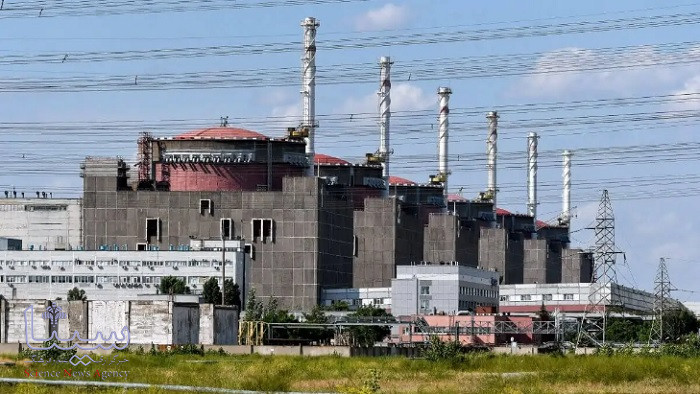What happens when a nuclear power plant catches fire?

According to SINA Press, for now, it seems the fire has been extinguished. It was at a training building outside the plant, localised to that area, and essential equipment hasn’t been damaged. Background radiation levels haven’t changed.
Could the reactor catch fire?
In this type of nuclear power plant, the reactor itself is not a high fire risk.
“The reactor itself is a pressurised water reactor,” says Tony Irwin, technical director of SMR Nuclear Technology and chair of Engineers Australia’s Sydney division nuclear engineering panel.
“It’s got a big concrete containment all the way around the reactor. So that really keeps it safe from fires.”
All of Ukraine’s current reactors are pressurised water reactors. Other types of reactors could be more vulnerable to fire. Chernobyl – which exploded before catching fire – had an RBMK reactor, of which there are still several in Russia.
“The reactor itself is okay. It’s the outside plant that you would be worried about,” says Irwin.
The major risk is loss of power to the site. Without power, the reactor’s cooling systems would fail, triggering a meltdown.
“The real concern is not a catastrophic explosion as happened at Chernobyl, but damage to the cooling system, which is required even when the reactor is shut down,” says Professor David Fletcher, from the University of Sydney’s school of chemical and biomolecular engineering.
“It was this type of damage that led to the Fukushima accident,” he adds.
While alarming, there are also protections in place to prevent this from happening.
“The outside plant, it’s got a multiple train system for protection,” says Irwin.
“You could have, say, a fire in train one – but you’d have train two and train three available as well. So, it doesn’t rely on one piece of plant to keep it safe.”
The plant has back-up diesel generators, as well as a connection to the grid for back-up power, so the reactors have two additional sources of power when they are shut down. It’s possible the grid connection could fail, and the diesel generators are flammable, so this system is not entirely failsafe – but it does have multiple redundancies.
Irwin says that even if the transmission fails and diesel generators catch fire, “you’d have to lose several of them” before the reactors couldn’t be cooled.
Nuclear power plants are built with fires in mind.
“Like any industrial facility, it’s got built in fire protection systems,” says Irwin.
“It’s part of the license for the nuclear power plants that you have got fire protection systems covering all your essential areas. So it’s got fire detection, it’s got sprinkler systems, there’s this built in fire hydrant system. It’s got site fire pumps, major pumping facilities. So, fire is definitely considered. You don’t have to rely on outside backup to put most fires out.”
What about a loss of staff?
While it looks like it’s not going critical at the moment, Zaporizhzhia is still in a warzone, and there will be disruptions to its workforce. Irwin says that the demands on these staff at the moment might be very high.
“You’re obviously working on shift. So, there’s a shift operations team in there at the moment. And they’re expecting to go home at the end of the shift, and another shift come in. That could be quite a problem. If they won’t let the new shift in, all the old shift can’t get out. You end up working very long hours to just keep everything safe and working.”
How many staff are needed to keep a nuclear power plant operational?
“You can do without maintenance, technical, you can do without a lot of them over a short problem period, as long as you’ve got enough operators to actually operate the plant,” says Irwin.
“They would need probably no more than a dozen operators on each reactor system. Those are the ones that you really need.”
Again, plants are designed against the threat that staff might not be able to make shift changeovers.
“They’d have food on site, they’d have emergency supplies, so that they’d be able to keep going, but I mean, ultimately, they’d have to try and sort of rotate people that are on site into sort of sleeping or working to keep the place safe and running,” says Irwin.
“If it gets to a stage where they can’t adequately man it, they’d shut the reactor down and make it safe.”
According to SINA Press, the system still needs to be cooled even if the reactor isn’t running, so an external power supply would need to be guaranteed for this. Once again, the system isn’t foolproof – but there are plenty of redundancies designed to keep the plant safe.
Source: cosmosmagazine

